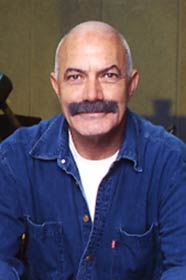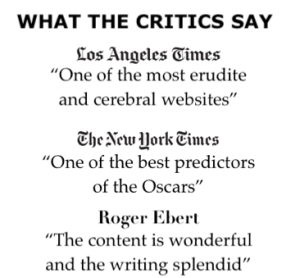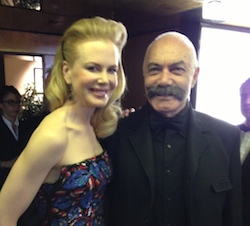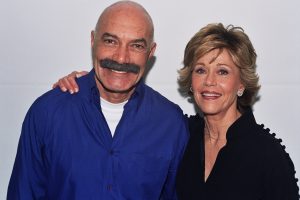Un Chien Andalou was enthusiastically received by the burgeoning French surrealist movement and continues to be shown regularly in film societies to this day.
The script was written in 6 days at Dalí’s home in Cadaqués. In a letter to friend in February 1929, Buñuel noted: “We had to look for the plot line. Dalí said to me, ‘I dreamed last night of ants swarming around in my hands’, and I said, ‘Good Lord, and I dreamed that I had sliced somebody or other’s eye. There’s the film, let’s go and make it.’
Duration of short: 15 minutes and 58 seconds. 15:58, with subtitles.
In deliberate contrast to Jean Epstein and peers, never leave anything to chance, every aesthetic decision having rational explanation and fitting clearly into the whole, Buñuel and Dalí eliminated logical associations.
Buñuel said: “Our only rule was very simple: no idea or image that might lend itself to rational explanation of any kind would be accepted. We had to open all doors to the irrational and keep only those images that surprised us, without trying to explain why.”
Buñuel wanted to outrage the self-proclaimed artistic vanguard of his youth: “Historically the film represents a violent reaction against what in those days was called ‘avant-garde,’ which was aimed exclusively at artistic sensibility and the audience’s reason.” Against his expectations, the film was a popular success with the very audience he wished to insult, leading Buñuel to exclaim: “What can I do about the people who adore all that is new, even when it goes against their deepest convictions, or about the insincere, corrupt press, and the inane herd that saw beauty or poetry in something which was basically no more than a desperate impassioned call for murder?”
Although Un Chien Andalou is a silent film, during the original screening (attended by elite of Parisian art world), Buñuel played sequence of phonograph records which he switched manually while keeping his pockets full of stones with which to pelt anticipated hecklers.
After the premiere, Buñuel and Dalí were granted admittance to the tight-knit circle of Surrealists, led by poet André Breton.
L’Age d’Or (1930)
Late in 1929, on the strength of Un Chien Andalou, Buñuel and Dalí were commissioned to make another short by Marie-Laurie and Charles de Noailles, owners of private cinema on the Place des États-Unis and financial supporters of productions by Jacques Manuel, Man Ray and Pierre Chenal.
At first, the intent was that the new film to have the same length as Un Chien, only this time with sound. But by mid-1930, the film had grown to an hour’s duration. Anxious that it was over twice as long as planned and at double the budget, Buñuel offered to trim the film and cease production, but Noailles gave him permission to continue.
L’Age d’Or was begun as a second collaboration with Dalí, but, while working on the scenario, the two had falling out. Buñuel had strong leftist sympathies, desired a deliberate undermining of all bourgeois institutions, while Dalí, who supported the Spanish fascist Franco and figures of European aristocracy, wanted merely to cause a scandal through the use of various scatological and anti-Catholic images. The friction was exacerbated when, at a dinner party in Cadaqués, Buñuel tried to throttle Dalí’s girlfriend, Gala, the wife of Surrealist poet Paul Éluard. As a result, Dalí had nothing to do with the actual shooting of the film.
During production, Buñuel shot mostly in sequence and used every foot that he shot. Buñuel invited friends to appear, for nothing, in the film; anyone who owned tuxedo or a party frock got a part in the salon scene.
A film called L’Age d’or, whose non-existent artistic quality is an insult to any kind of technical standard, combines obscene, disgusting and tasteless incidents. Country, family, and religion are dragged through the mud.
L’Age d’Or was publicly proclaimed by Dalí as deliberate attack on Catholicism, precipitating much larger scandal than Un Chien Andalou. One early screening was taken over by members of the fascist League of Patriots and the Anti-Jewish Youth Group, who hurled purple ink at the screen and then vandalised the adjacent art gallery, destroying valuable surrealist paintings.
The film was banned by Parisian police “in the name of public order.” The de Noailles, both Catholics, were threatened with excommunication by the Vatican because of the film’s blasphemous final scene (which visually links Jesus Christ with the writings of the Marquis de Sade).
In 1934, they decided to withdraw all prints from circulation, and L’Age d’Or was not seen again until 1981, after their deaths, though a print was smuggled to England for private viewing.
The furor was so great that the premiere of another film financed by the de Noailles, Jean Cocteau’s The Blood of a Poet, had to be delayed for over two years until outrage over L’Age d’Or had died down. But Charles de Noailles was forced to withdraw his membership from the Jockey Club.
Buñuel and leading lady Lya Lys received offers from MGM and traveled to Hollywood at the studio’s expense. While in the US Buñuel associated with other celeb expatriates including Sergei Eisenstein, Josef von Sternberg, Jacques Feyder, Chaplin and Bertolt Brecht.
Buñuel loose-ended contract with MGM stipulated that he “learn some good American technical skills”, but, after being ushered off the first set he visited because the star, Garbo, did not welcome intruders, he decided to stay at home and only show up to collect his paycheck.
His only contribution to MGM was as an extra in La Fruta Amarga, a Spanish-language remake of Min and Bill.
After a few months at the studio, he was asked to watch rushes of Lili Damita to gauge her Spanish accent, but he refused and sent a message to studio boss Irving Thalberg stating that he was there as a Frenchman, not a Spaniard, and he “didn’t have time to waste listening to one of the whores.” He was back in Spain shortly thereafter.
Spain in the early 1930s was amidst political and social turbulence. Due to surge in anti-clerical sentiment and desire for retribution for the corruption and malfeasance of the extreme right and their supporters in the church, Anarchists and Radical Socialists sacked monarchist headquarters in Madrid and burn down or wreck churches in the capital. Similar revolutionary acts occurred other cities in southern and eastern Spain, in most cases with the acquiescence or assistance of the official Republican authorities.
Buñuel’s future wife Jeanne Rucar:”he got very excited about politics and the ideas that were everywhere in pre-Civil War Spain”. Buñuel joined the Communist Party of Spain (PCE) in 1931, though later on he denied becoming a Communist.










